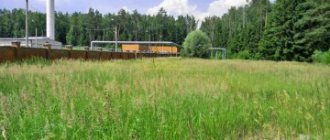All lands that are provided for temporary use or permanent possession to Russian citizens imply their intended use. Since 2014, the division of land plots by type of use has come into force; the situation is described in Article 42 of the Land Code of the Russian Federation. This is done to preserve the most valuable areas in proper form and to protect the environment.
Land can be transferred for use to both individuals and legal entities. Misuse is punishable by various sanctions against the owner or tenant.
Purpose and permitted use of land plots
This concept is very broad in its meaning. The purpose of using land (or a section of it) is determined by the entire landowner legal framework.
The land purpose is determined not only for areas that are already used in some way, but also potentially suitable for one purpose or another. The so-called land zoning has been introduced specifically for this purpose.
It is for their intended purpose that the Land Code of the Russian Federation distinguishes seven categories of land or types of land plots. Any piece of Russian land is included in one of them.
Next we will talk about the 2015 classifier of land plots by purpose.
Territory zoning rules
Zoning is the distribution of land into certain zones and areas, as well as the establishment of certain restrictions on its use. Based on Article 30 of the “Town Planning Code of the Russian Federation” dated December 29, 2004 N 190-FZ, zoning rules have the following goals:
- Preserve nature and architectural monuments;
- Develop municipal territories;
- Ensure the legality of the interests of individuals and organizations;
- Create all conditions to attract more investors for the construction of capital projects.
At the same time, the zoning rules for the territory include:
- The procedure for their application, as well as making all kinds of changes;
- Urban planning regulations, as well as an urban zoning map.
Allotment classifier
The seventh article of the Land Code of the Russian Federation, in accordance with what the land is intended for, distinguishes seven groups. According to them there are lands:
- Agricultural purposes. They can raise livestock, which includes reindeer, and produce fish and waterfowl (the term “aquaculture” is used here). Plus growing all kinds of crops, from grass for hay to orchards and vineyards.
- Settlements. In such territories you can build, live and register.
- Industrial purposes, communications, defense and much more. The definitions from the third item in the category list take up an entire paragraph and combine a large number of land types.
- Specially protected. These are places with special historical significance - for example, an ancient settlement that was excavated by archaeologists and turned into an open-air museum. This also includes all recreational areas, which, together with the buildings on them, are intended to provide recreation, sports and/or tourism.
- Forest. No special explanation is required here.
- Aquatic. These include any body of water.
- Stock. These are areas where literally nothing happens. They don’t live there, they don’t conduct any activities.
In addition to the intended purpose, there is also the so-called permitted use. This term is used in a narrower sense, and the groups and types within it are more branched (for example, commercial use).
The document, which indicates land groups and deciphers permitted activities, is called “Classifier of types of permitted use of land plots.” It was developed and approved in accordance with the Land Code of the Ministry of Economic Development of the Russian Federation
.
Video description
It doesn’t hurt to know about the possibility of changing the VRI, information in this video:
Peculiarities of the purpose of a private plot of land
Personal subsidiary plot (PHS) is a series of buildings created for agricultural activities. The owner of the plot must have confirmation of the right to the land through a documented transaction (purchase and sale, gift) or have papers on the transfer of the territory for use from the municipality.
Features of private household plots:
- The owner does not keep accounting records and is not a payer of taxes to the treasury due to the absence of activities aimed at making a profit.
- Only surplus products received are allowed to be sold.
- If entrepreneurial activity is carried out, the owner must not use hired labor.
- Private household plot is the documented purpose of land without alternatives.
It is worth noting that such plots can be located within urban areas, like a personal plot.
A plot of land for private household plots cannot be used for business activities
Event Request
It happens that for some purpose land of a certain purpose is needed, but there are no plots of a suitable category. A potential solution to this problem is a request (petition) to change the intended purpose of the land.
Such an intention should not contradict a number of federal laws and requires careful preparation and collection of a certain package of documents.
Types of land use for individual housing construction, vegetable gardens and business according to the classifier
For the purposes of individual development and personal farming, plots with codes 2.0 – 2.7 in section 2 of the classifier are suitable. These numbers mean that the land can be used for the following purposes:
- construction of low-rise residential buildings (up to 3 floors, not implying apartment division);
- growing fruits, berries, vegetables and other agricultural crops (gardening and horticulture);
- ancillary buildings (construction of sheds, garages, etc.);
- construction of garden buildings;
- maintaining personal subsidiary plots and organizing a plot;
- construction of temporary mobile structures with the ability to connect to general technical networks (trailers, campsites, etc.).
When planning business activities, a land plot that has the type of permitted use provided for in section 4 of the classifier (codes 4.0-4.9) is suitable. The intended purpose of such sites allows for the placement of capital construction projects built for trade, transport services, recreation, entertainment, etc.
Cadastral valuation
This is the name of a special branch of appraisal activity. By law, all lands in the country are subject to accounting. Cadastral value can be called one of the characteristics of land (plot).
Cadastral valuation activities are carried out according to special rules (in particular, according to the methodological instructions of the Ministry of Economic Development) and only by members of the SRO. Here are just some of the assessment objectives:
- determination of the total, collateral, starting (at auctions) or redemption value of land;
- platform for economic feasibility calculations (when it comes to land acquisition);
- calculation of the tax rate.
In some cases, the cadastral valuation of lands for various purposes affects the legal regime for the management and use of lands. For example, especially fertile territories sometimes have a very high cadastral valuation, and on the basis of this, changing the land category of such lands is prohibited.
How to change the type of use: procedure
The first step when changing the territory's VRI is to obtain information from local governments about the current type of use. Changing the VRI of the earth has the following procedure:
- Writing an application to the authorities;
- Establishing the possibility of adjustment based on the analysis of the urban planning plan;
- After this, if the answer is positive, the documents are sent for consideration;
- Conducting a hearing and making possible adjustments;
- Sending the protocol to the administration.
Timeframe for making a decision
Consideration of an application to change the VRI of a land plot is considered no more than sixty days, if hearings are necessary.
When no hearing is held, the procedure may last thirty days. The decision is made by the head of the local administration, with each participant making his own proposals, on the basis of which further decisions are made. The following may refuse to change the VRI:
- If the hearing participants consider the changes not rational;
- If it is not possible to make changes from a legal point of view;
- If all required documents have not been provided.
ATTENTION! After successful consideration of the application, the owner submits a package of documents to Rosreestr to change the data in the cadastral registration.
Documents for Rosreestr:
- Territory survey plan;
- Application written by the owner of the site;
- Title document;
- The administration's decision to change the VRI.
Documents can be submitted in person when visiting Rosreestr or sent by mail, indicating all attachments.
Improper use of land
The obligation to use land exclusively in accordance with its intended purpose is stipulated in the same Land Code. If the owner, tenant or other user commits violations, liability for them arises in accordance with the Code of Administrative Offenses of the Russian Federation.
There is an important point: it is prohibited not only to use a land plot for purposes other than its intended purpose, but also to not use it for its intended purpose. In general terms, the following types of violations are identified:
- A discrepancy between the land's purpose and actual use results in a fine. It is calculated as a percentage of the cadastral value or as a fixed amount if a cadastral valuation of the land has not yet been carried out. Individuals will pay at least ten thousand rubles in fines for using land for other purposes, people in various positions will be “punished” with at least 20 thousand, and 100 thousand rubles is the lower limit for organizations.
- Slightly lower are the fines for non-use of agricultural land, which falls under Federal Law No. 101-FZ, adopted on July 24, 2002. They are calculated as a fraction of a percent of the cadastral value of a plot for individuals and as a percentage (up to ten) for employees and entire organizations.
- If the land is not used for housing construction, in this case the fines are again increased. For example, organizations will be required to pay at least four hundred thousand rubles, although not more than seven hundred; for individual representatives of the organization and individuals the amounts are an order of magnitude less.
Full information on issues of liability for using land for other purposes is available in Article 8.8 of the Code of Administrative Offenses of the Russian Federation.
Purpose is an important criterion for classifying land into one category or another. It must be taken into account during any land transactions.
Change of VRI
If the use of the site does not comply with the assigned VRI, the owner may be held liable. For example, when constructing a house on a field plot of private household plot (intended only for agricultural activities), such a house can be demolished, considering it a self-construction and issuing a corresponding act.
Therefore, initially the owner must take care of changing the VRI and for this he needs:
- Find out the VRI that his site may have. This information can be obtained from the town planning regulations.
- Submit an application for a change in possible use to the cadastral service, if such a temporary property is included in the list of main ones and such a change will be made. Or send an application to the Land Use Committee, if such VRI is listed among the conditionally permitted ones.
In this case, the decision to add (not add) a new VRI will be made on the basis of public hearings.
If the town planning regulations do not indicate the possibility of adding the required view for a given site, you can try to change the territorial zone. To do this, you must also contact the Land Use Committee.
In some cases, it is impossible to do without changing the category of land. For detailed information, read the article “Changing the category of a site”.
Conducting public hearings
The need for implementation and the expediency of holding in the absence of hearings are determined by the commission, and it also decides how important it is to take into account the conclusions adopted at these hearings.
If necessary, the following rules are used at meetings:
- Participants in the hearings are only land owners;
- They can also make their comments and suggestions;
- The results are published on the official website of the organization;
- The time from the beginning of notifying participants about the training and until the publication of the results should not exceed 1 month;
- If the decision of the hearing is positive, the commission makes recommendations; if it is negative, it explains the decision;
- The applicant bears all costs associated with the hearing.
Types of horticultural non-profit associations (SNT, SPK, SNP)
Horticultural non-profit associations are non-profit organizations established by citizens on a voluntary basis (federal law “On horticultural, gardening and dacha non-profit associations of citizens”). They can have different shapes:
- SNT - gardening non-profit partnership;
- SPK - horticultural consumer cooperative;
- SNP is a horticultural non-profit partnership.
The above legal forms are widespread today in all cottage villages.
Registration in a gardening non-profit association is quite possible, but most often this requires going through a judicial procedure. There is a resolution of the Constitutional Court of the Russian Federation, which talks about allowing registration on garden plots.










